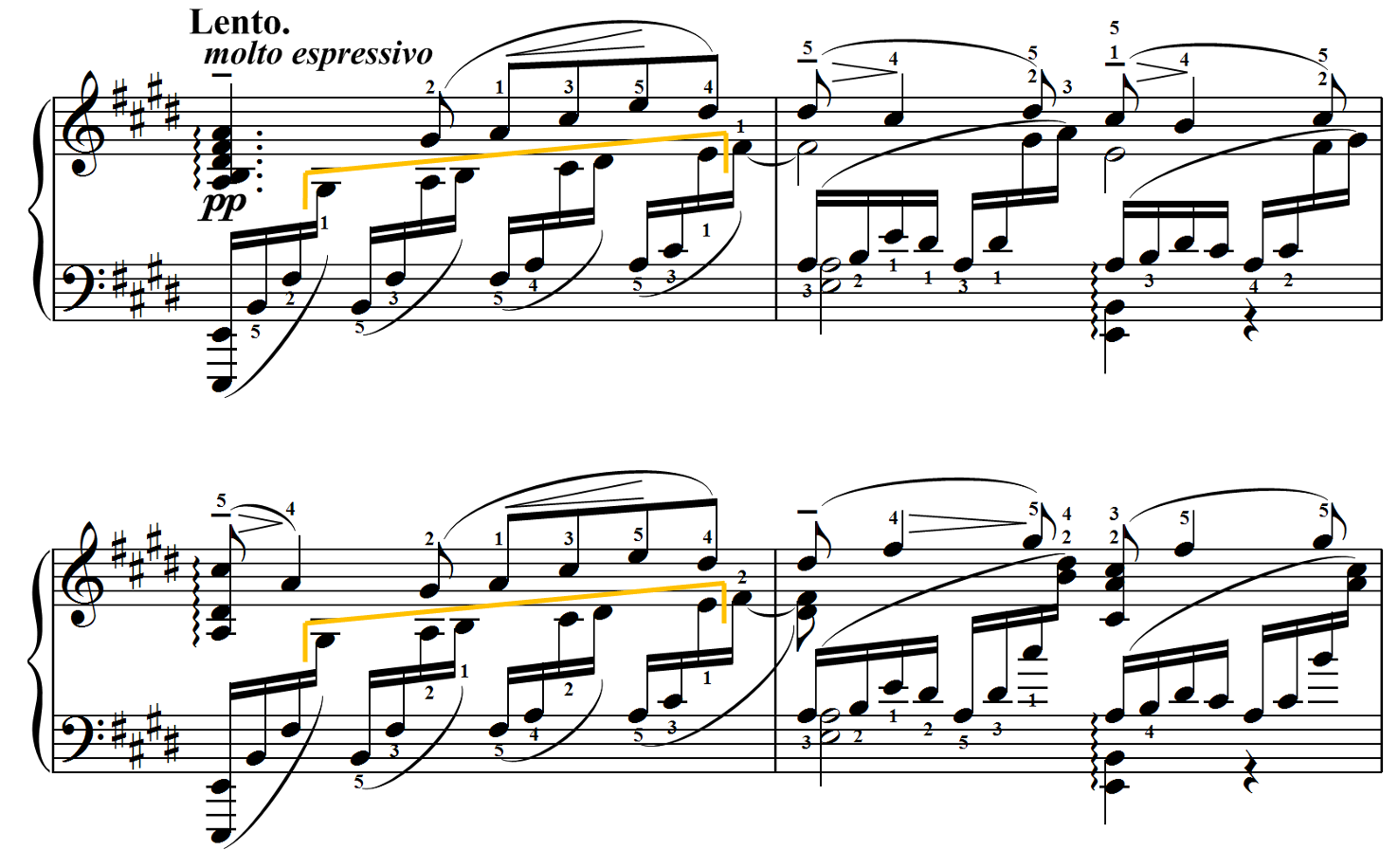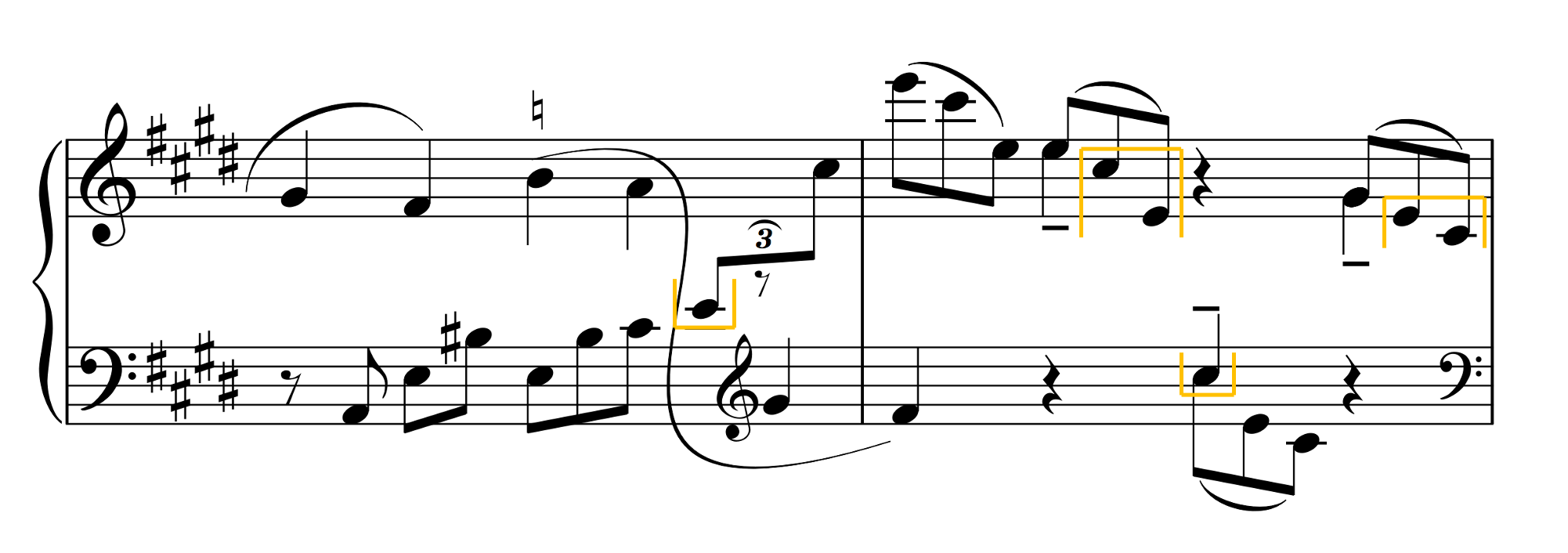Fingerings in Italics are Rachmaninoff’s.
“I chose these fingerings to correspond to the musical phrase/accents.”
Submitted by Seolyeong Jeong
Published on 8/23/2021
Fingerings in Italics are Rachmaninoff’s.

“I chose these fingerings to correspond to the musical phrase/accents.”
Submitted by Seolyeong Jeong
Published on 8/23/2021

“The first redistribution simplifies a repeated note; the second one alleviates an awkward stretch in the right hand.”
Submitted by Michael Lenahan
Published on 5/25/2020

“While what Rachmaninoff wrote isn't particularly difficult, I find playing alternating thirds between the hands is more effortless and it comes out more articulate. It's a good way to get this nasty section off on the right foot.”
Submitted by Michael Lenahan
Published on 5/25/2020

“By taking the B and the A with the thumb in the left hand, this makes the right hand simpler.”
Submitted by Michael Lenahan
Published on 5/25/2020

Submitted by Seolyeong Jeong
Published on 8/23/2021
“I repeat the fingering of 3/1 to let the top of the chord in the second measure be played with 5. I rearrange the hands in the second measure for the sake of bringing out the melody.”

“By keeping most of the 16th notes in the left hand, the right hand is simplified so you will be free to focus on legato and phrasing.”
Submitted by Michael Lenahan
Published 5/25/2020

“By keeping most of the 16th notes in the left hand, the right hand is simplified so you will be free to focus on legato and phrasing.”
Submitted by Michael Lenahan
Published on 5/25/2020

Submitted by Michael Lenahan
Published on 5/25/2020

Submitted by Ben Pawlak
Published on 3/29/2020

Submitted by Ben Pawlak
Published on 3/29/2020

Submitted by Ben Pawlak
Published on 3/29/2020

Submitted by Ben Pawlak with thanks to Dr. Greg DeTurck
Published on 3/29/2020

“I like maintaining the pattern of alternation between the hands.”
Submitted by Michael Clark
Published on 1/12/2020

“Taking the final notes of the arpeggio together as a sixth ensures a tidy ending.”
Submitted by Michael Clark
Published on 1/12/2020
Original:

Suggested performance:

“Dividing the thirds between the hands is more comfortable and more legato.”
Submitted by Michael Clark
Published on 1/1/2020

“Shifting the D5s to the left hand helps with voicing and keeps the right hand in a more compact position.”
Submitted by Michael Clark
Published on 4/18/2020

“This division of the notes eliminates several finger crossings and adds security and visual flourish to the descending arpeggio.”
Submitted by Michael Clark
Published on 4/18/2020

“I find taking these extra notes in the right hand more reliable than playing the left hand as written.”
Submitted by Michael Clark with thanks to Robert Roux
Published on 4/18/2020